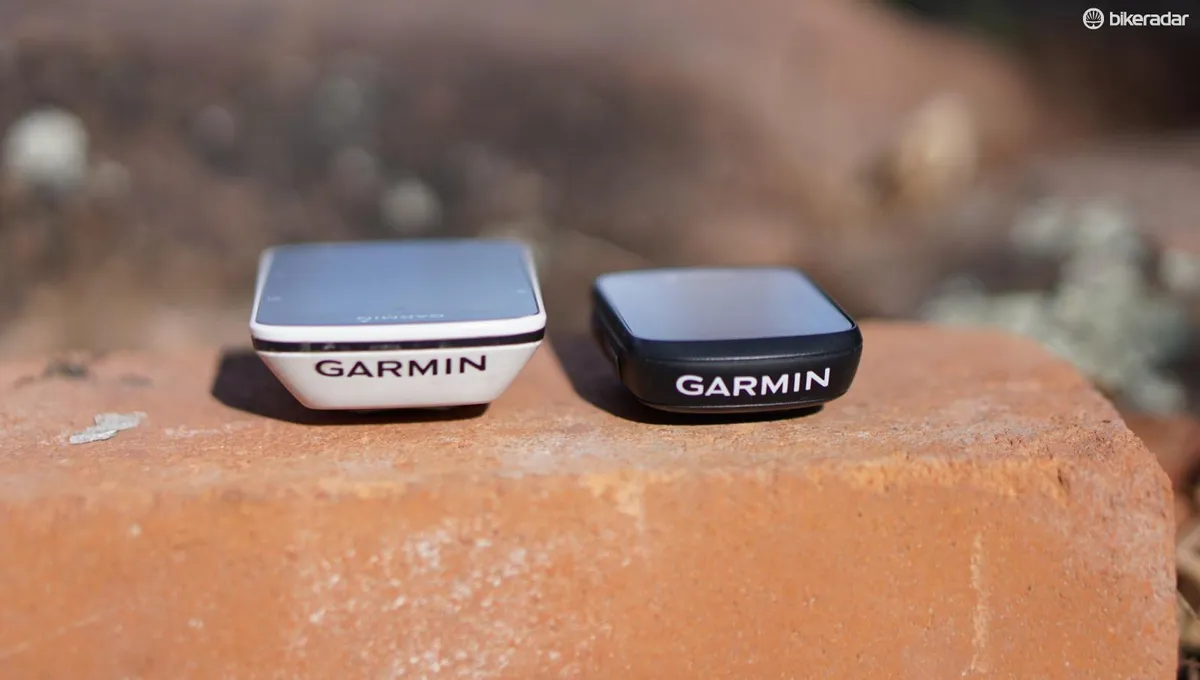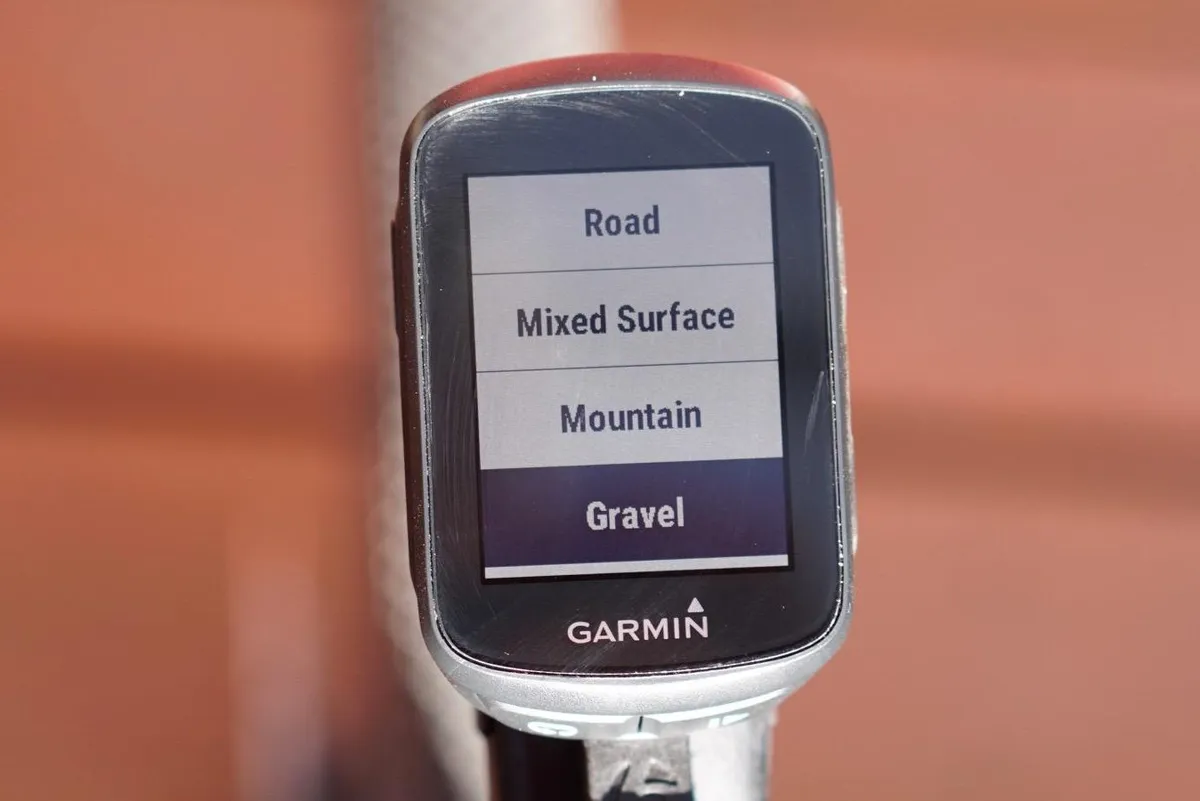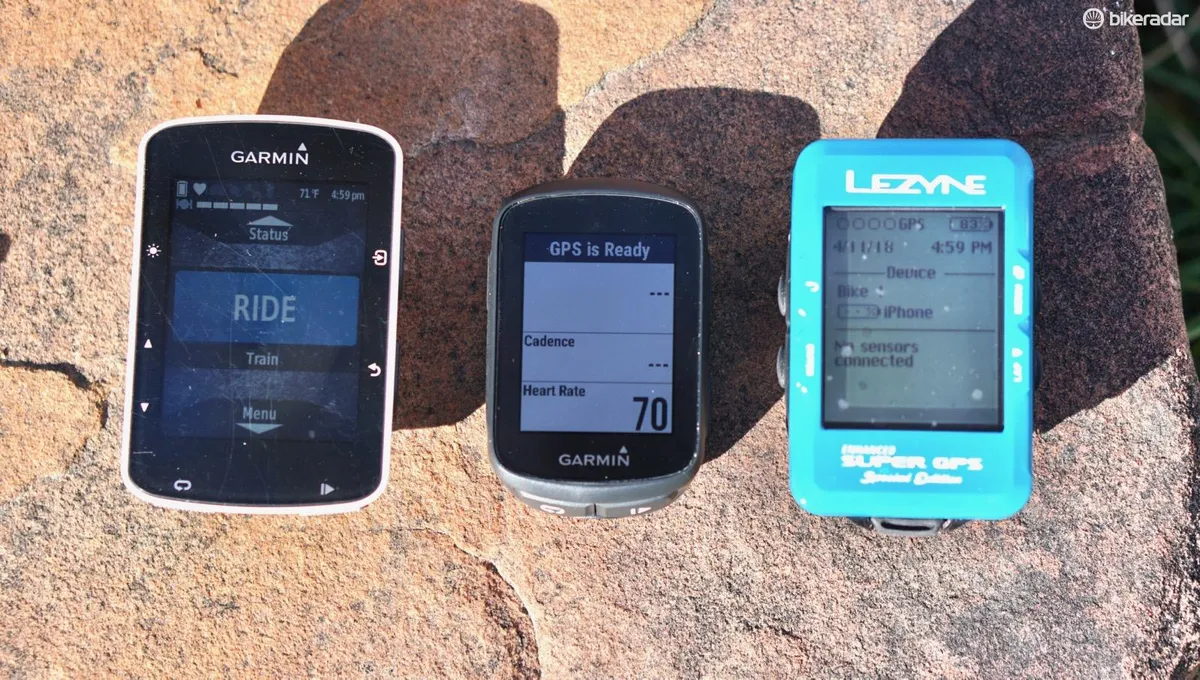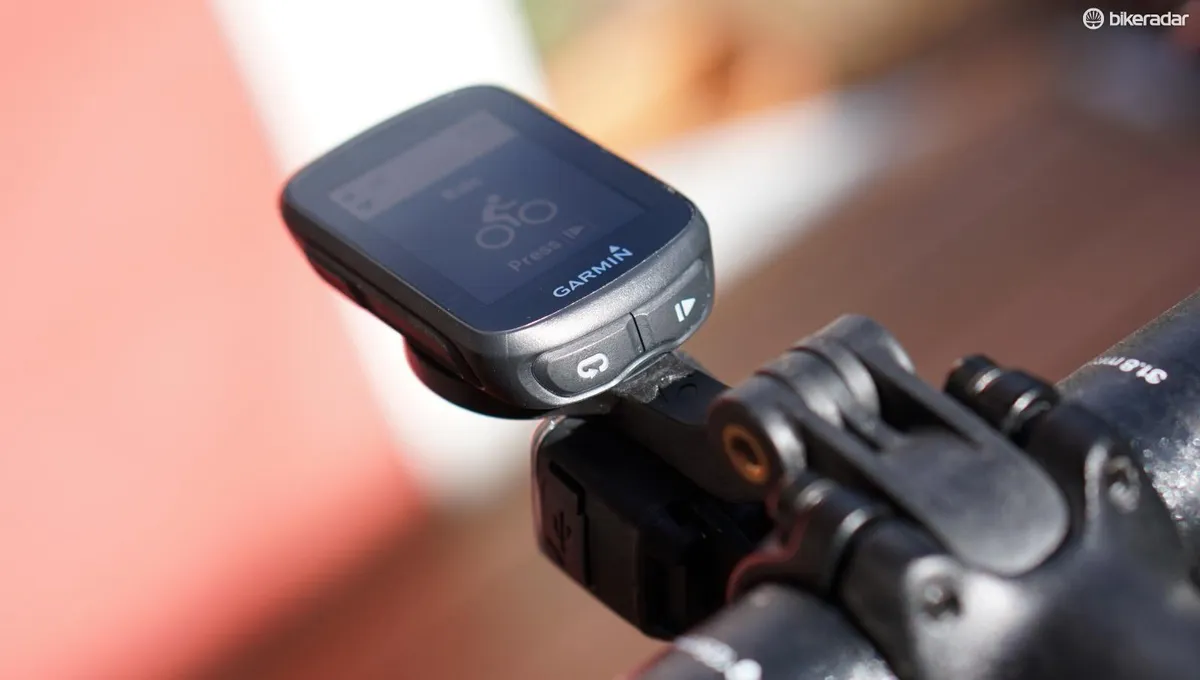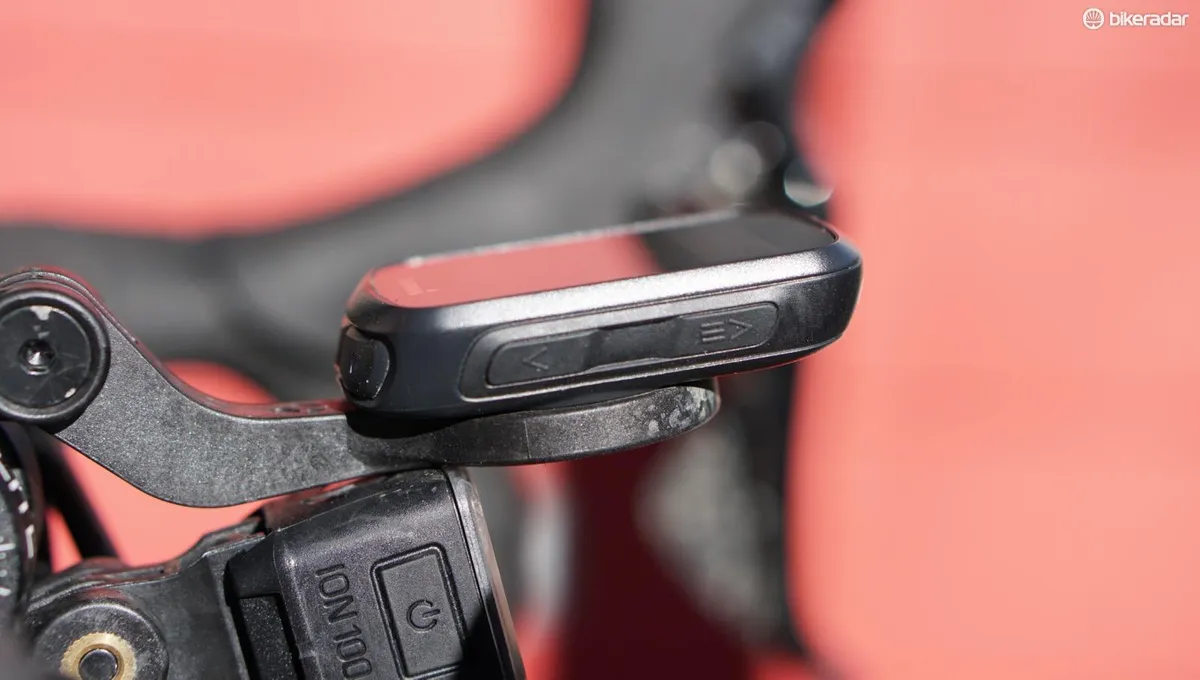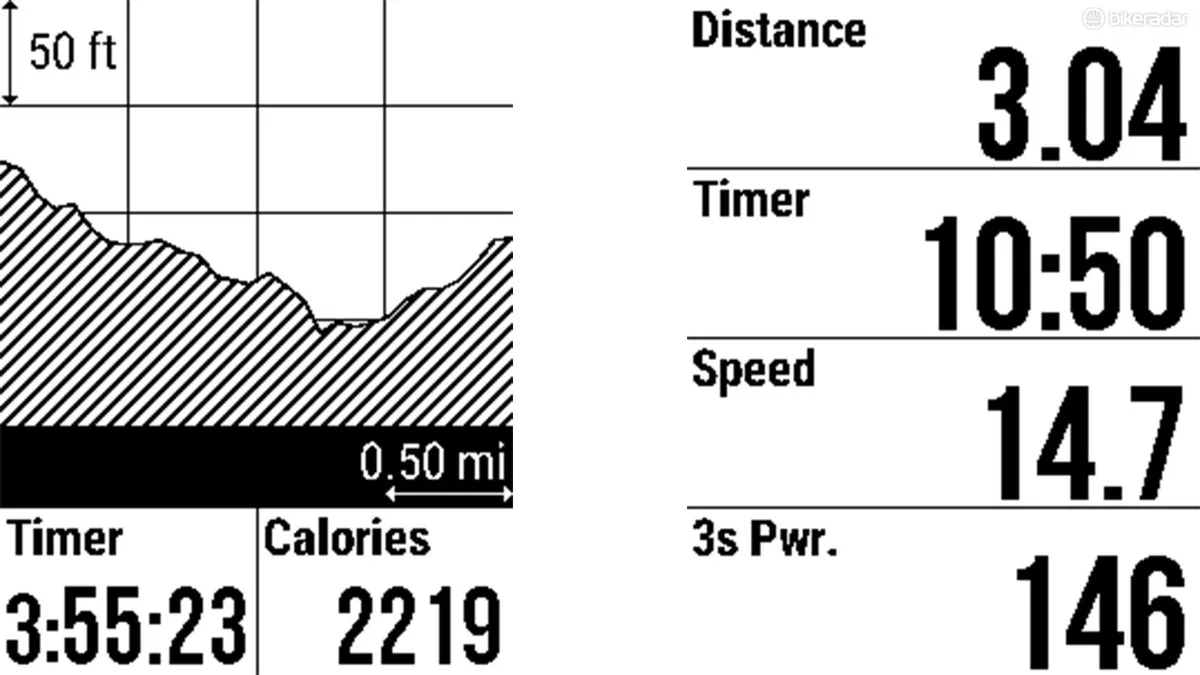If you are overwhelmed by the price and feature list of top-end GPS units, but you want a dependable unit that covers the basics, the Garmin Edge 130 might fit the bill. The slender computer has all the basic features plus modern niceties like automatic uploads and incoming call and text notifications, plus one of the most crisp, easy-to-read displays you can find in a cycling computer.
Small, sharp package
Let's start with the physical attributes. The 40x62x17mm unit is fairly tiny, as cycling GPS computers go, but still has a decently large 1.8in / 46mm screen.
The black-and-white screen is outstanding in terms of crisp readability. The 303x230pixel screen has a Memory-in-Pixel (MIP) display that allows for a faster maximum frame rate than other, more expensive Garmin computers.
For instance, the Edge 820 is larger, but only has a 200x265 display, and the enormous Edge 1030 has a 282x470 pixel display. Neither have MIP. The end result is a sharp display that is easy to read in the sun and/or with sunglasses on.
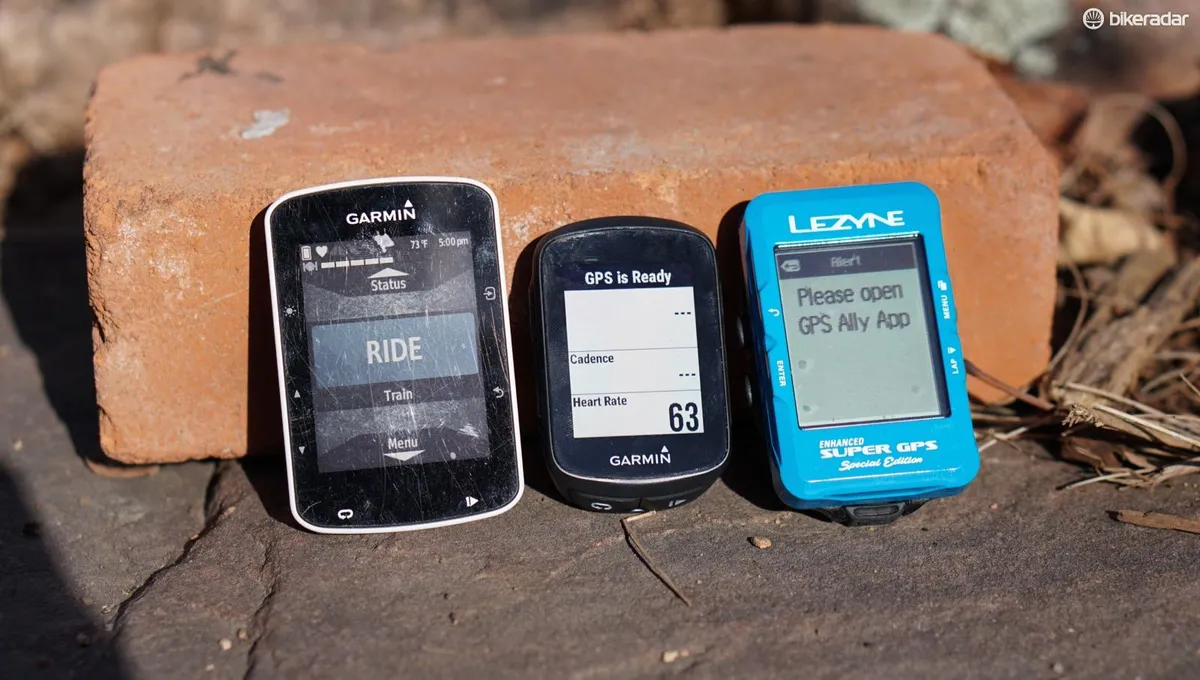
It weighs a mere 33g, but boasts a claimed 15 hours of battery life.
Five buttons control the computer: power, lap, start/stop, up/menu and down.
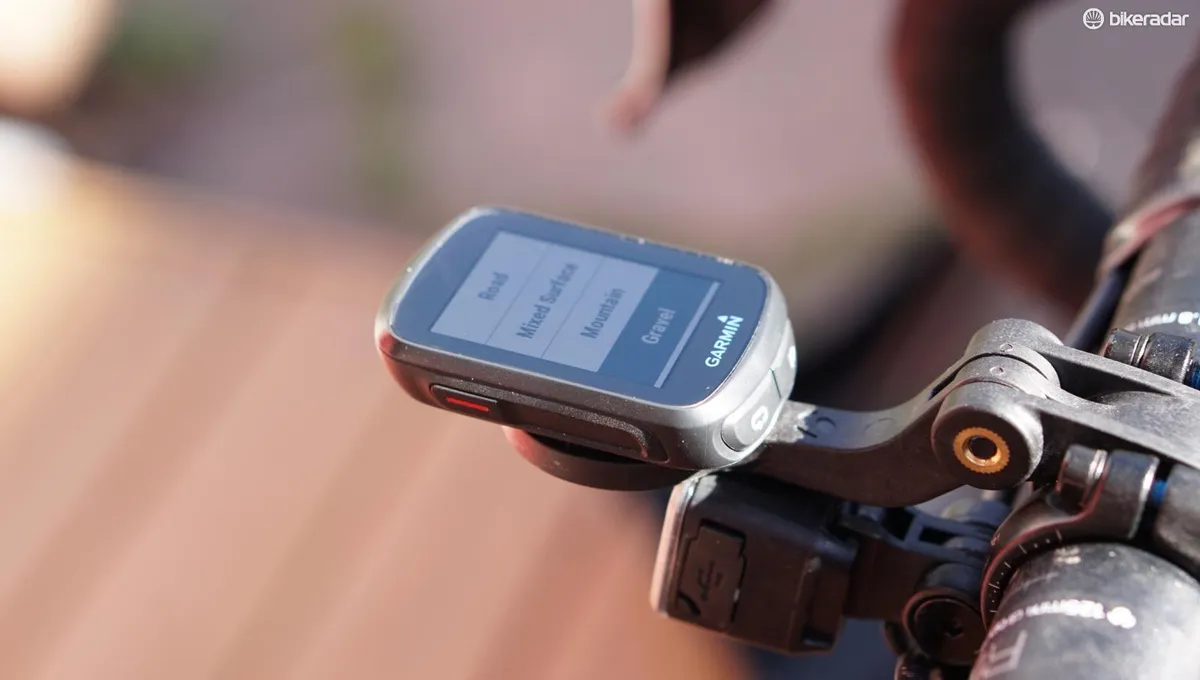
For most computers, I prefer an out-front mount for aesthetics and visibility. Having a big Edge 1030 strapped to your stem looks kinda silly, I think. But the Edge 130 is so small, it almost disappears when mounted with the included rubber-band strap on the bars or stem.
Put another way, the Edge 130 looks kinda silly on a larger out front mount, like a pea on the end of a butter knife.
Basic feature set of the Edge 130
If you want the basics of speed, distance, time, elevation, heart rate and power, the Edge 130 has you covered. And there are some variations on these metrics, such as average, lap and 3sec average.
But there are not the endless variations for training metrics that you'll find on other more expensive computers. Forget TSS or IF, the Edge 130 does not even offer metrics such as 1sec power or left/right power. So, if you are keen on training with power, this isn't your primary computer.
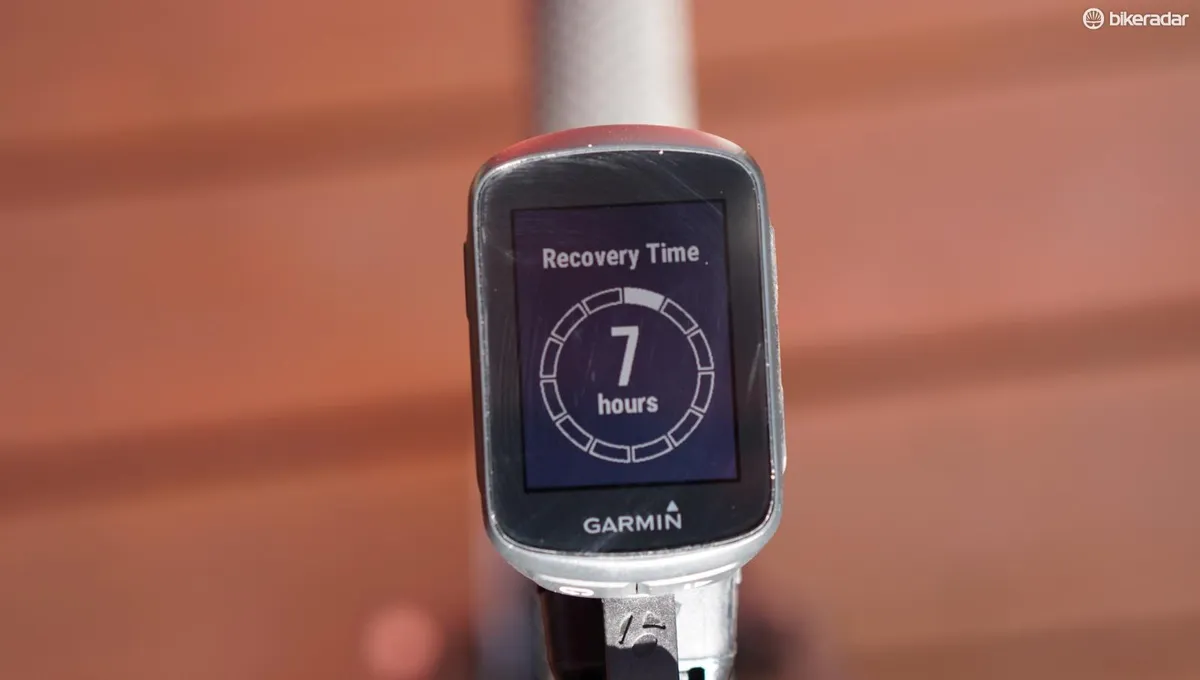
For navigation, there are a few basic options. There is no base map on the Edge 130, just a blank white screen with a line to mark your path. You can drag a created route file onto the unit when it's connected to a computer, and then follow the line with some basic cues from the Edge 130.
And you can also use the 'back to start' function when out on any ride, choosing either 'via the same route' or 'straight line'.
While the navigation is just a breadcrumb on a blank screen and all the other information is presented in numeric form, the elevation loss and gain for each ride is shown in a graph.
You can set up each page with between one and 10 fields, with a few different options in layout. For instance, a three-field layout can have the one big field on top of two little ones, or two little ones sandwiching the big one.
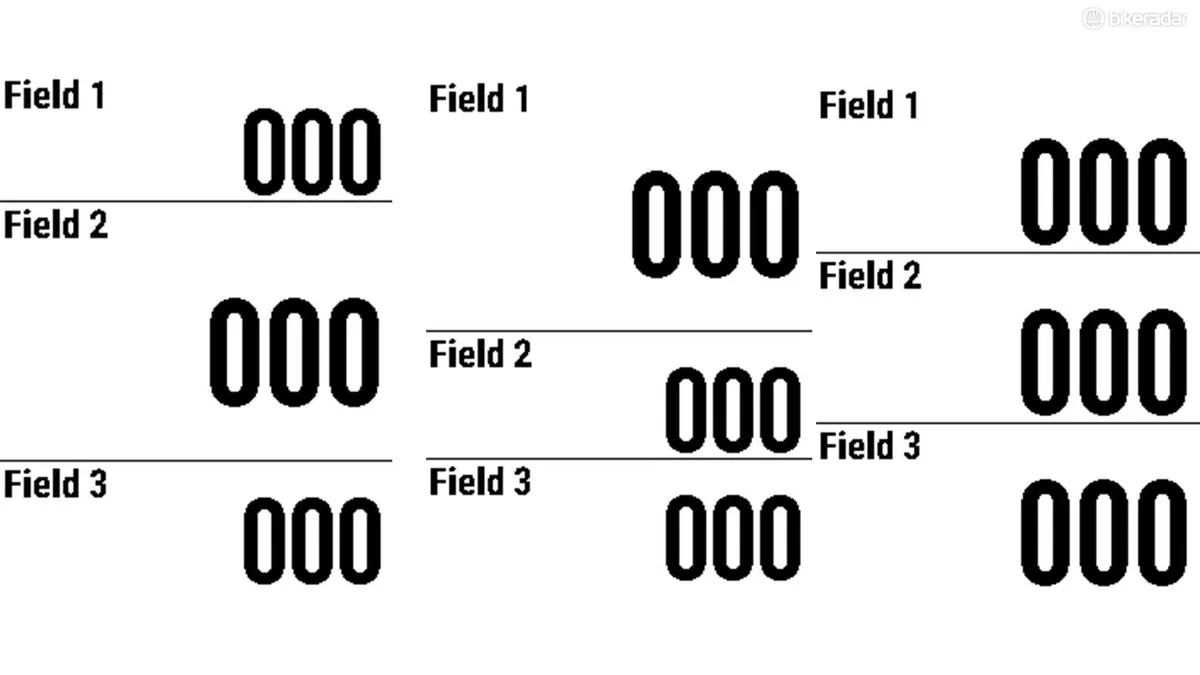
You have to set up the fields on the computer, not with an app.
Ease-of-use Bluetooth features
The Edge 130 can connect to peripherals such as a heart-rate monitor or power meter on ANT+ or Bluetooth, which is fairly progressive. Bluetooth often makes for a more solid connection.
The best thing about Bluetooth on a GPS, though, is how it connects to your phone for incoming text/call notification and automatic uploads of your rides. I appreciate seeing who is calling on my computer without having to dig the phone out of my jersey. One of my kids calling? I am pulling over to answer. If it's work... I'll get back to you.
You can also set it up to LiveTrack, where your friends or family can follow you on a computer, provided you are riding with your smartphone. I suppose this can be a good safety feature, but I've never really used it.
Edge 130 vs Edge 520
The Edge 520 isn't much more expensive, but offers a substantially deeper training package of features.
If you want a Garmin to use for training or racing, I'd recommend the 520. It's a little bigger and has a color screen that can handle maps, but the main draw for me is all the power-centric features. In addition to various metrics, the 520 can also walk you through testing and training with your FTP.
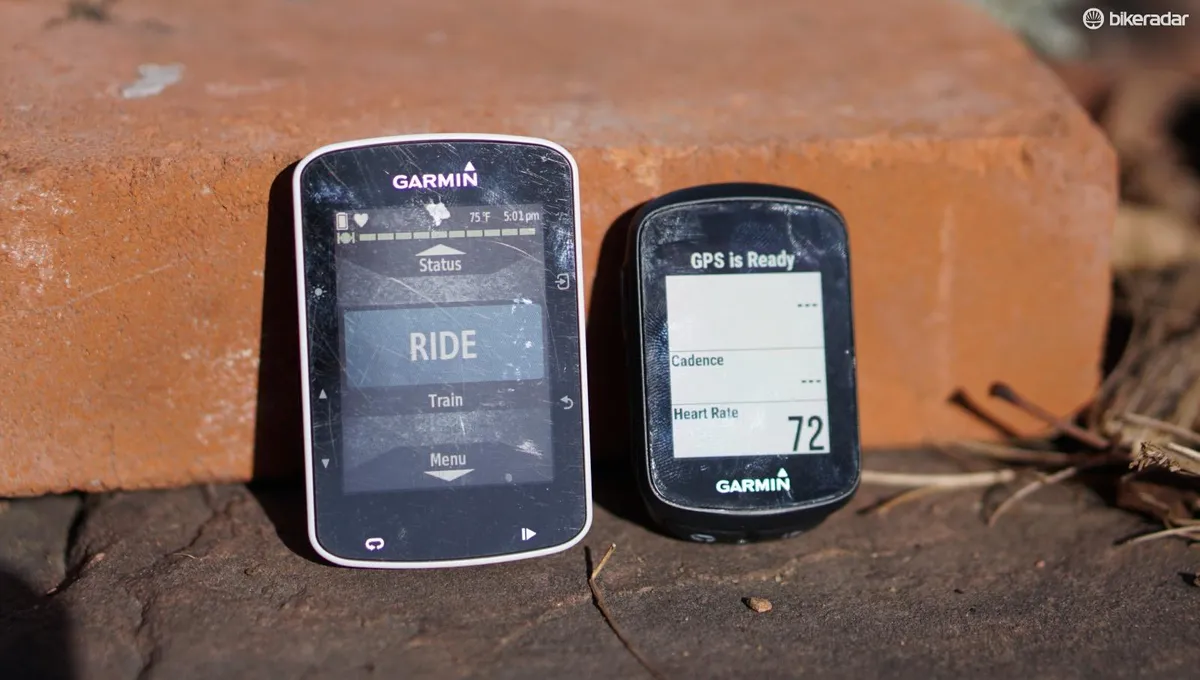
That said, the claimed battery life on the 130 is superior by at least five hours.
Edge 130 vs Edge 20/25
The Edge 130 is the same width and thickness as the Edge 20 and 25 computers, but is just a little longer.
Upgrades over the 20 and 25 include the MIP screen, the number of lines of viewable data and the battery life.
You can also use the Edge 130 with Garmin's Varia rearview radar.
Edge 130 vs Lezyne Super GPS
While the Edge 130's screen is far superior to Lezyne's offerings, the feature set and price fall short of a unit like the Super GPS.
The Super GPS is cheaper, yet has at least twice the number of metrics as the Edge 130.
The Super GPS also lets you configure the screen layouts with the companion app, which is much easier and faster than scrolling through menus on a little computer with up and down buttons.
The Lezyne app also works for navigation on the fly: search the map on your phone to find your destination, then zap it to your Super GPS for navigation. The Edge 130 navigation only works when you connect it to a computer for a preloaded route, or when you use the 'back to start' feature.

However, the Lezyne Super GPS isn't nearly as sleek as the Edge 130, and the screen is nowhere near as crisp.
Bottom line: A basic but refined little GPS unit
The Edge 130 is not an extreme case on any end of any spectrum, save the screen crispness. It is not the cheapest, the smallest, the biggest or the most robustly featured.
However, it does do a certain number of the basic things quite well; recording and displaying GPS-, sensor- and barometric-based data in a tiny package, display it on a very crisp screen, and uploading it wirelessly to Strava or elsewhere once you're done.
For a basic GPS computer, it isn't the cheapest, but it may be the best.
